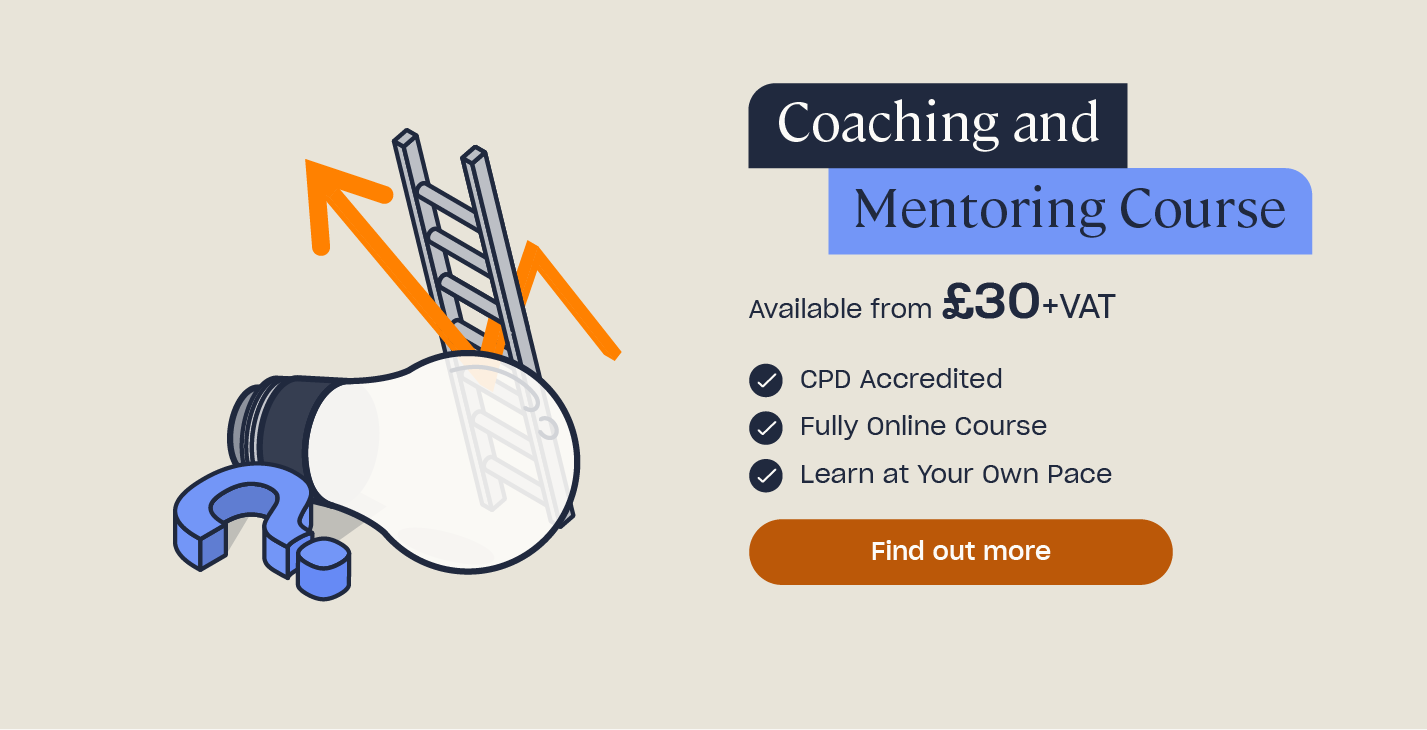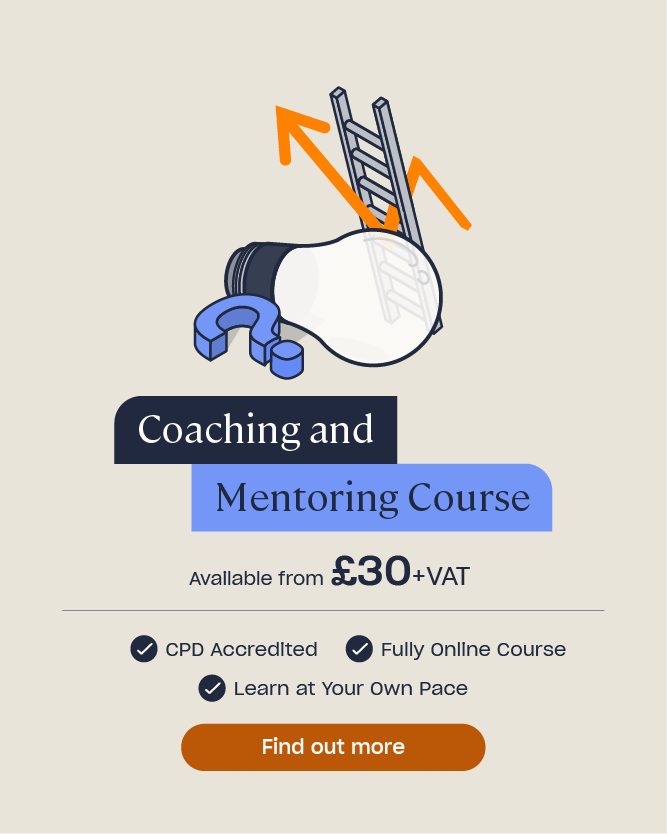Instructional Coaching: Benefits & Strategies
Instructional coaching is an alternative to the ‘typical’ professional development programmes used in the teaching profession. It has been deemed an effective way to support and develop teaching staff – something that is much needed when one-third of all teachers leave within five years of qualifying and disadvantaged children are at risk of being a whole year behind their peers due to ineffective teaching. Instructional coaching could give NQTs and early-career teachers the tools and skills they need to overcome challenges, as well as helping those that are more qualified to continually progress. As a result, more students should have access to effective teachers and high-quality education.
In this article, we will outline what instructional coaching involves, its benefits for teaching staff and students, and the strategies used within this programme.

What is Instructional Coaching?
Instructional coaching involves an expert working with a teacher in regular one-to-one sessions to gradually improve both their performance and their students’ learning. The expert could be an external coach, a senior leader, or an experienced teacher – and the coachee might be a novice or a more well-practiced teacher (because everyone has something that they could improve upon!).
This type of coaching is ongoing and circular: the expert regularly observes the coachee teaching, gives them feedback on what and how to improve, and helps them purposefully practise until they achieve their goals (also known as their target performance). Practice usually takes place outside the classroom in controlled conditions, using carefully chosen activities, before the teacher tries the strategy in class. By regularly revisiting and practising the same skills until goals are met, the learning process is optimised – it takes time, repetition, and support to overcome existing habits and create new, more effective ones.
While other forms of CPD are broad and generic, with few opportunities for active learning, instructional coaching is individualised, thorough, and supportive. As a result, research has shown it to be effective and beneficial in many ways, including giving NQTs the confidence and skills they require, and reducing the sense of isolation that many teachers experience.

Types of Instructional Coaching Models
There is a range of different models that can be used, depending on the focus and preferred instructional coaching strategies. They include:
- Student-Centered Coaching (Diane Sweeney). This instructional coaching model focuses on student data rather than direct aspects of the teacher’s performance – the aim is to improve student achievement by refining the teacher’s use of assessments, instruction, and planning.
- Research-Led Coaching (Jim Knight). The focus here is on using research-based strategies to inform the coaching – this ensures that teachers learn the most effective, up-to-date techniques to use in practice. Jim Knight is also a thought leader on video coaching.
- Cognitive Coaching (Elena Aguilar). Conversations are at the centre of this model – instructional coaches use strategies such as paraphrasing and asking well-placed questions to allow teachers to work out what they should do by themselves.
- Bambrick-Santoyo’s Six Step Model. The six steps give instructional coaches a thorough foundation to use in each coaching session – they should praise, probe (using targeted questions), identify problem areas and an action step to take, practise, plan ahead for when the teacher should implement this step in a lesson, and finally prepare a review.
- My Teaching Partner (MTP) Programme. This is an intensive video-based programme where instructional coaches aim to improve the quality of teacher-student interactions – this, in turn, should increase student engagement and achievement, and reduce problematic social and behavioural outcomes.
- Content-Focused Coaching (CFC) Programme. This is a model where teachers are provided with intensive coaching on a particular subject to improve the quality of instruction and their students’ understanding of it. The model was originally developed for use in mathematics, but has also been used for other subjects, including literacy. For example, the Targeted Reading Intervention (TRI) Model within this programme aims to give teachers the ability to individualise instruction on reading strategies, helping children who are not benefiting from general classroom instruction.

Why is Instructional Coaching Beneficial for Teachers?
Research has shown that the potential benefits of instructional coaching extend to the coachee, their students, and the coach. These include:
- Improved teaching performance and a better-articulated curriculum.
- Increased professional growth for both the coachee and the coach.
- An increased ability for teachers to analyse their own lessons and improve their ways of working.
- A wider repertoire of instructional skills and strategies for teachers to draw upon.
- A better grasp of best practices in teaching and learning.
- Stronger professional ties and relationships with colleagues – teachers are likely to overcome feelings of isolation, collaborate more, and drive each other forwards.
- Improved school culture and a more positive learning environment.
- Enhanced student achievement and reduced achievement gaps.
The wealth of benefits has led to instructional coaching becoming increasingly popular across the country as a form of CPD.
Instructional Coaching Strategies
The role of the instructional coach is to understand how a teacher is performing at the moment, work with them to decide what their goals are, and choose appropriate strategies to help them meet these goals gradually.

Video-Based Coaching
One teaching strategy that an instructional coach might use is video-based coaching. This involves filming a teacher during lessons, so that the coach can provide them with concrete, objective evidence about what happened and what effect this had on the class. Within this method, a coach might take several different approaches, such as:
- Voiceover. The coach might ask the teacher to watch the video on mute and describe what they’re doing (and why) throughout. This allows the coach to understand what the teacher’s underlying plan was, so that they can better understand how to help them.
- Total recall. They might ask the teacher to watch a segment of the video and then immediately describe what they saw. Again, this provides the coach with insight into the teacher’s thought process, as well as giving the teacher the opportunity to realise what they could improve.
- Pivotal pausing. In this strategy, the teacher pauses the video at a moment they consider to be pivotal to the goals of the lesson. Looking at specific moments of teaching allows the teacher to make bitesize changes, and not feel overwhelmed.
- Thought-provoking questions. The coach might simply ask the teacher questions that elicit a thoughtful response, such as ‘what made you decide to…?’, and ‘how did that match up with your expectations?’.
For example, an instructional coach might be working with a teacher whose students are disengaged and don’t understand how their lessons are relevant. By observing the teacher, the coach might realise that they are not explaining the lesson goals effectively, nor how these fit into the greater picture. The coach could show the teacher video footage of the beginning of their lessons to make them realise what is going wrong, and help them script a lesson introduction that they can practise and implement in the future.

Counting Strategies
Another useful instructional coaching strategy is a simple counting strategy. This is effective for both lessons that have been filmed and lessons that the coach has transcribed. In this strategy, the coach asks teachers to count up the number of times that they see evidence of a specific practice – to assess how frequently they demonstrate this – or to count the number of engaged students, the number of times students respond, teacher talk time, and so on. This allows the coaching session to be focused on one specific issue amidst everything else going on in the lesson.
An example of an instructional coach scenario in this context is if a teacher was struggling to implement organised classroom entry routines – entering the classroom was taking them much longer than it should, and valuable lesson time was being wasted.
In this case, the coach might observe the problem, ask the teacher to count how long the entry routine is taking or the number of students who aren’t ready to learn when they should be, and break the entry routine down into small stages to work on. These stages might include asking the children to line up outside the classroom, getting them to sit down in the right place, handing out books, and so on. The coach might also script the instructions that the teacher gives the class.
Sharing Their Expertise
Because instructional coaches are experts in teaching, they will naturally have a final strategy in their instructional coaching toolkit: their own experience and expertise. They might be able to share personal anecdotes and what worked for them, as well as research-based teaching strategies that they have encountered.
For example, a teacher might be struggling to meet the needs of EAL students in the class. The coach might be able to offer advice based on their own teaching experience, or direct them to evidence-based instruction, such as our article ‘How to Support EAL Students in the Classroom’.
Throughout their work, instructional coaches aim to be non-judgemental, disciplined, and confidential; the content of coaching sessions should not be discussed with others, and teachers should be able to trust that they will be guided effectively until they meet their goals.

Looking to become a coach?
Our Coaching and Mentoring training course is designed to give you the practical tools and techniques needed to kickstart your successful coaching or mentoring career today.
How Do I Conduct a Coaching Cycle?
The continuous series of steps that instructional coaches follow when working with teachers is known as a coaching cycle. The cycle can broadly be split into four areas: planning, assessing, teaching, and reflecting.
In the ‘planning’ stage, the coach meets with the teacher to discuss their long-term goals, as well as potential immediate sub-goals. Breaking a larger aim up into smaller steps makes it more achievable.
The ‘assessing’ stage consists of observation, where the coach takes notes on what the teachers and students say throughout a lesson, actions that the teacher takes, and how the students respond. After the lesson, the coach writes down their feedback – both positive and negative feedback should be remarked upon.
In the ‘teaching’ stage, the coach suggests specific ways that the teacher could improve. They might provide them with resources to work through together, or give them a tangible strategy (such as a script to use when responding to a certain incident or behaviour). The teacher then practises utilising the new strategy – for example, in the classroom with no students present – and is given feedback before they implement this strategy in a real lesson.
The ‘reflecting’ stage allows both coach and teacher to discuss how well the teacher has met this particular goal. They might discuss whether it went as expected, whether they hit the goal, and how useful it was. Then, they will turn to the next sub-goal to work on, ensuring that they continue to practise the one they have already achieved – the coaching cycle starts all over again, continuing until the teacher demonstrates that they have met their greater goals. At this point, they can leave the coaching cycle, but the coach should check in on them at a later date to ensure that they are still managing to achieve their aims.

Successful Coaching Cycles
Coaching cycles could cover these four areas in different ways, depending on your personal preferences. For example, you might prefer a relationship-driven coaching cycle – where the instructional coach presents themselves as a fellow learner who provides non-threatening support – or cognitive coaching, where you focus most strongly on developing the teacher’s thought processes.
However, what holds true across all types of coaching cycles is that:
- Teacher and coach need to have a trusting relationship, so that the teacher is willing to try new things and get the most out of the process.
- The level of support should be matched to the teacher’s level of proficiency – teachers who are struggling more should have more time with the coach.
- The teacher’s rationale should always be considered before advice is given.
- The teacher should be part of the decision-making process – while the coach should guide them, they should ultimately decide what they think will work best in their classroom.
- Coaches need to ensure that the teacher fully understands what they are doing – they could use checklists to explain teaching strategies most effectively.
- The whole process should be adaptable; if a certain strategy isn’t working, the coach should come up with a new one. If a certain goal seems unachievable, it should always be adjusted.
- Student-focused goals are objective, and thus a good place to start: focusing on how to improve student behaviour, achievement, or attitudes gives both teacher and coach a powerful focus.
Instructional coaching is a form of CPD that holds a lot of promise: guiding teachers to meet their goals through continuous personalised sessions helps them to increase their confidence, skills, and effectiveness. This could have a huge impact on both teacher retention and student achievement in the UK. It is certainly a method worth trying, if you haven’t already.
Further Resources:
- CPD Courses for Teaching Staff
- Professional Development Plan for Teachers
- Effective Communication in the Classroom: Skills for Teachers
- What to Expect From NQT or ECT Years: Guidance & Tips
- Coaching vs. Mentoring: What’s the Difference?
- How to Develop Coaching and Mentoring Skills











